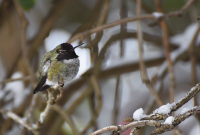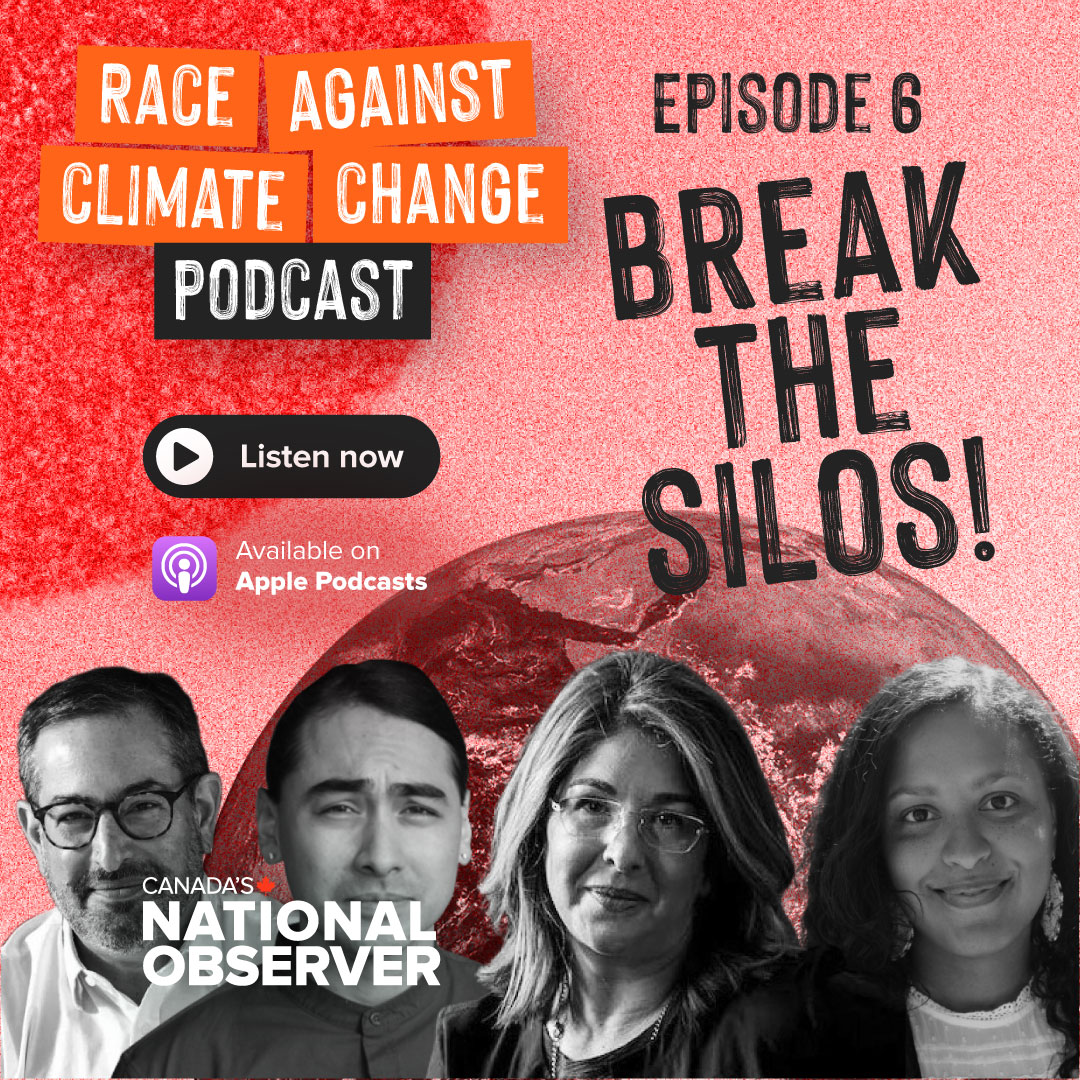Support strong Canadian climate journalism for 2025
This story was originally published by The Guardian and appears here as part of the Climate Desk collaboration.
Flanders Moss bog is slumped on the flat, farmed landscape of the Carse of Stirling in Scotland like a jelly fungi. It wobbles when you walk on it, and a metal pole goes down eight metres before reaching hard ground. This lowland-raised bog is a dome of peat fed mainly by rainfall and it acts like a single organism — the whole thing has to be looked after for any part to be in really good shape. If it is drained in one area, it will affect the water level across the entire bog.
For much of human history, peat bogs have been thought of as wastelands. This 860-hectare site has been hacked away and drained since the early 1800s to make space for fertile farmland below. It is about 60 per cent of its original size. Bogs scar easily and the drainage ditches made more than 100 years ago are still visible.
It is now recognized that peat bogs are among the greatest stores of carbon and, after decades of restoration, the holes in the peat at Flanders Moss have been patched up. Areas that used to be purple with heather are turning green as key bog plants such as sphagnum (peat moss) and cottongrass come back. The bog rises out of the land like a sponge and “breathes” as changes in the weather and water level cause it to swell and contract.
Researchers in Scotland are tracking “bog breathing” using the latest satellite technology that can detect just a few millimetres of change. This provides an accurate test of how healthy the site is and how much carbon it could be holding. Flanders Moss holds around three million tonnes of carbon.
Thanks to the restoration work, the water table has risen by as much as 40 centimetres on the site and is now at the surface. As the bog draws in water from the surrounding land, it helps manage flood risk. Flanders Moss bog has removed 890 hectares of land from the Forth catchment, reducing flooding downstream.
A healthy bog is a bit like a malfunctioning compost heap. “With a compost heap we keep throwing stuff in and it all rots and breaks down, but with a bog, it doesn’t. It just keeps accumulating and accumulating,” says David Pickett, who manages the site, which is a National Nature Reserve.

The Scottish government-funded Peatland Action project, which started in 2012, is helping revive 25,000 hectares of degraded peatland. In 2020, the Scottish government committed £250 million of funding over 10 years to bog restoration in a bid to lock carbon in the land. It is hoped the satellite data can be used to work out which bogs need urgent help and what efforts are working.
“At some point, hopefully, we’ll be able to inform government, but also private investors and other funding bodies, to say, ‘Well, it’s better to put your money into these sites,’” says Henk Pieter Sterk, who is working on the Peatland Action project at NatureScot. “Here in Scotland, we have the opportunity to protect and restore peatlands … It’s the easiest thing you can do. Restoring peatlands is a no-brainer.”
It takes about a month to process the satellite data for a third of Scotland, which is available through the Copernicus Open Access Hub. The technology is still in development but is likely to be cheaper than ground-based mapping. “The next steps would include looking at an even wider range of peatland types and conditions across Scotland, followed by — hopefully — an assessment of the tool across the U.K. for the same purpose,” says Sterk.
Despite these restoration efforts, Flanders Moss is still a net emitter of carbon. Scotland’s bogs emit about 10 million tonnes of carbon equivalent, which is almost as much as the transport sector. Stopping these emissions and preventing further degradation are the primary objectives of the restoration project.

Bogs work on a different timeframe than humans. They form slowly, accumulating between 0.5 millimetres to one millimetre of peat a year, taking up to 1,000 years to grow one metre. But Pickett’s team has jump-started recovery. “We’ve done most of the big work here,” he says. “Now, it’s a question of waiting. The process of fixing this site will last 100 years, and the benefits of work being done now will only be seen by the next generation.”
It’s easy to see why bogs weren’t popular. They are stores of partly decayed organic matter, which are too acidic and devoid of nutrients to support healthy trees. But this bog is colourful and has a fresh, earthy smell. As well as being a fantastic store of carbon, this ancient, watery land — healthy peat is about 90 per cent water — is also rich in wildlife, including rare lizards, dragonflies and even snakes.
“There isn’t headline sexy stuff like puffins and seals but you go around the boardwalk and it’s a fantastic place,” says Pickett. “I always used to think bogs must have been named on a Friday after a really bad week. We’re trying to change the perception of bogs, but it’s a hard sell.”





Comments
fantastic. positive news. Ive been reading up on peatbogs in Canada in Narwhal and NO and just completed and interactive artwork called “All the way to Hudson’s Bay”, for a regional arts show in Simcoe County which speaks to the exact issues in this article on Scotland. would that our gov had as much intelligent interest in preserving these jewels of the north here , the last undammed water system in North America.
My art piece is comprised of a watercolour painting of Hudson’s Bay Lowland peatlands in northern Ontario, from a photo in Narwhal ,and 5 dream and nightmare cards which hang off the sides of the frame on cords which viewers can choose to read. They contain some of the amazing facts about them and my dream scenario of the “breathing lands” being protected and respected by federal law and stewarded by First Nations, as they have for centuries and 5 nightmare scenarios of what Doug and the Destroyers have already started doing to them.
The funnest bit is a fimo model of Doug on his backhoe, which viewers are invited to “ drive” across the painting “all the way to Hudson’s Bay” with appropriate broom brooom! noises signalling the ignorant madness of such a proposal from our premier.